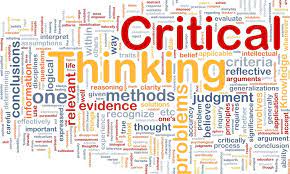Introduction:
The world is rapidly evolving, and with it comes the need for critical thinking and problem-solving skills. Educational institutions worldwide have recognized this growing demand, paving the way for a shift from teaching students mere facts and figures to ensuring that they develop well-rounded thinking skills. But how do we transition from merely fostering such skills in kindergartens, primary schools, high schools, and universities to creating entire thinking schools? In this article, we explore the process of making this paradigm shift a reality.
The Importance of Thinking Skills:
Thinking skills comprise various cognitive functions like critical and creative thinking, problem-solving, reasoning, decision-making, among others. These capabilities equip students with essential tools to navigate through complex issues, search for innovative solutions and adapt to new challenges as they progress through school and into their chosen careers.
The Limitations of Traditional Education Systems:
While traditional educational systems have sustained generations before us, they are often criticized for lacking sufficient focus on life skills or promoting rote learning. Classrooms need a dynamic environment where students engage in activities that nurture cognitive competencies and cultivate lateral thinkers capable of adapting to a constantly changing world.
The Concept of Thinking Schools:
The notion of “thinking schools” encourages a culture where educators prioritize cognitive capabilities alongside academic content. By fostering student-centered education, these schools go beyond traditional curricula; they create nurturing environments that enable active learning, promote critical inquiry into social issues, encourage collaboration among peers and actively involve parents and community members.
Critical Components of Thinking Schools:
1. Active Learning: Encourages students to engage with the material actively through discussions, group work, experimentation or project-based learning. This method stimulates curiosity and helps develop thought processes essential for complex problem-solving.
2. Metacognition: Inculcates awareness among students about their thoughts, learning strategies (both successful and unsuccessful)and individual learning styles. This self-awareness enhances independent thinking and boosts students’ ability to learn from experience.
3. Collaboration: Promotes a supportive environment where students work together as they contribute valuable knowledge, skills and perspectives on challenging projects.
4. Inquiry-Based Learning: Challenges students to explore real-world problems using research, critical analysis and reflective thinking. This methodology fosters deep understanding and innovation.
5. Integration with Life Skills: Embeds essential life skills like communication, conflict resolution, teamwork and empathy, equipping learners to face challenges in both their professional and personal lives.
6. Parental Involvement: Encourages a strong partnership between parents and educators to support each child’s cognitive development holistically.
Conclusion:
The transition from focusing on thinking skills to embracing thinking schools necessitates systemic changes that involve all stakeholders, from education policymakers to teachers, parents and the community at large. By integrating effective education strategies that foster higher-order cognitive skills, schools can create resilient thinkers who can confidently navigate our increasingly complex world. Undoubtedly, the paradigm shift from thinking skills to thinking schools is instrumental in preparing future generations for success.











